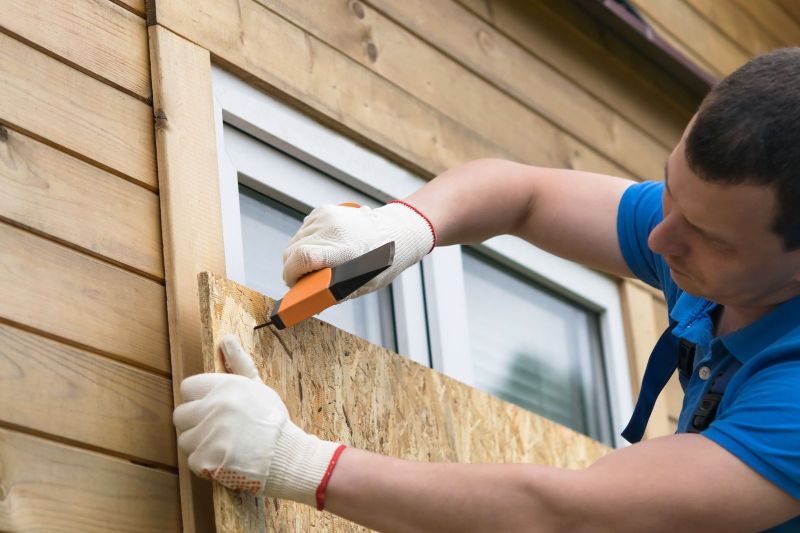Storms can be powerful and unpredictable, causing significant damage to homes and properties. Whether you're a homeowner, property manager, or just someone who wants to be ready for the worst, knowing how to prepare for storm inspections is crucial. In this blog, we'll provide you with valuable tips and insights to help you get ready for the next big storm and navigate the inspection process.
Understanding the Importance of Storm Inspections
Before delving into the preparation, it's essential to understand why storm inspections are so vital. Storms, including hurricanes, tornadoes, and severe thunderstorms, can wreak havoc on homes and buildings. High winds, heavy rain, and flying debris can cause structural damage, water intrusion, and more. Prompt and thorough storm inspections help identify the extent of damage, allowing for quicker and more effective repairs. They can also be critical for insurance claims and ensuring the safety of occupants.
Preparation Steps
1. Create a Storm Emergency Kit
Start your preparation by creating a storm emergency kit. This kit should include essential supplies such as flashlights, batteries, non-perishable food, water, first-aid items, and important documents. Having these supplies readily available can make the inspection process smoother and ensure you and your family's safety during and after the storm.
2. Know Your Insurance Policy
Understanding your homeowner's insurance policy is crucial. Familiarize yourself with the details, including what's covered, deductibles, and the claims process. This knowledge will help you navigate the insurance aspects of storm inspections more efficiently.
3. Reinforce Vulnerable Areas
Before a storm hits, consider reinforcing vulnerable areas of your home or property. This might include securing loose shingles, reinforcing windows, and clearing gutters and downspouts. By taking these preventive measures, you can reduce the likelihood of extensive damage during the storm.
4. Document Your Property
One of the most critical steps in preparing for storm inspections is documenting your property. Take clear and comprehensive photos and videos of the interior and exterior of your home or building. This documentation will serve as valuable evidence for insurance claims and for assessing post-storm damage accurately.
5. Stay Informed
Monitor weather forecasts and stay informed about storm developments in your area. Knowing the storm's intensity, projected path, and expected duration will help you prepare better. Consider investing in a weather radio or smartphone apps that provide real-time storm updates.
Tips for Post-Storm Inspections
1. Safety First
Once the storm has passed and it's safe to venture outside, prioritize safety. Be cautious of downed power lines, fallen trees, and standing water, which may be electrically charged or hiding hazards. Wear appropriate protective gear, such as sturdy shoes and gloves.
2. Inspect Exteriors First
Begin your inspection on the outside of your property. Look for visible signs of damage, including missing shingles, damaged siding, broken windows, and structural issues. Take photos and notes for documentation.
3. Check for Water Damage
Inspect the interior for signs of water damage, including leaks, damp spots, and water stains on ceilings and walls. Mold and mildew growth are also indicators of water intrusion. If you find any of these issues, document them immediately.
4. Contact Professionals
For extensive damage or complex repairs, it's best to contact professionals. Experienced contractors, roofers, and restoration experts can provide assessments and estimates for repairs. Reach out to your insurance company to initiate the claims process if necessary.
5. Maintain Records
Throughout the post-storm inspection and repair process, maintain organized records. Keep a detailed log of all communication with insurance adjusters, contractors, and any other parties involved. This documentation will be invaluable when filing insurance claims.
Insights for Future Storm Preparedness
Preparing for storm inspections isn't just about the immediate aftermath of a storm; it's also about being ready for future events. Here are some insights to help you become more resilient in the face of storms:
- Invest in Storm-Resistant Features: Consider fortifying your property with storm-resistant features such as impact-resistant windows, reinforced garage doors, and a well-anchored roof.
- Regular Maintenance: Regularly maintain your property to address small issues before they become major problems. This includes inspecting and cleaning gutters, trimming trees near your home, and reinforcing vulnerable areas.
- Review and Update Insurance: Periodically review and update your homeowner's insurance policy to ensure it adequately covers your property's value and any improvements you've made.
- Community Resources: Join or be aware of local community resources, such as emergency shelters and disaster relief organizations, to assist during and after storms.
- Emergency Response Plan: Develop and share an emergency response plan with your family or tenants. Ensure everyone knows how to stay safe during a storm and what to do in its aftermath.
By following these tips and insights, you'll be better equipped to handle storm inspections, minimize damage, and recover more swiftly. While you can't control the weather, you can certainly take steps to protect your property and loved ones when the next storm comes your way.



